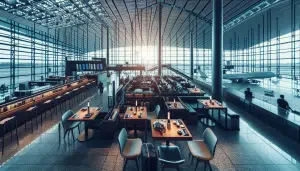Secrets You Miss About Slow Travel Adventures
Oliver Reed November 8, 2025
Wonder what it’s like to embrace slow travel? Discover why a growing number of travelers are skipping rushed itineraries, choosing immersive experiences, eco-conscious itineraries, and cultural adventures that unfold at their own pace. This guide unpacks the essentials of slow travel, sustainable journeys, and authentic connection.
Understanding the Slow Travel Movement
Slow travel is transforming the way people approach vacations. Instead of jumping from attraction to attraction, slow travel focuses on immersing oneself deeply in a place, its culture, and its rhythms. In this evolving niche, travelers prioritize sustainable tourism and meaningful interactions, exploring communities beyond sightseeing. Key aspects—like choosing local lodging, using public transport, and supporting eco-friendly practices—set the foundation for a richer experience while supporting social responsibility and authentic tourism.
Pacing matters. With slow travel, the emphasis isn’t on how much ground is covered, but on how much is truly absorbed. Whether staying in a family-run inn or exploring regional cuisine markets, the time invested in these settings creates lasting memories. This slower rhythm encourages organic discovery and genuine connections, shifting the focus from checklist travel to personal growth and cultural appreciation. Many travelers report that such immersive journeys give travel a new sense of purpose and satisfaction.
Cultural immersion can reshape perspectives. Spending additional days or weeks lets travelers establish routines, befriend locals, and take part in everyday rituals, rather than feeling like outsiders. As slow travel grows, relevant keywords such as ‘sustainable travel,’ ‘slow tourism,’ ‘eco-conscious travel,’ and ‘cultural immersion’ are gaining traction. These interconnected trends reflect a global movement toward mindful and ethical exploration, as reported by major travel publications and institutions (Source: https://www.nationalgeographic.com/travel/article/slow-travel).
Benefits of Embracing Slow Travel
Taking time to explore destinations in depth yields surprising benefits. Slow travel fosters well-being, reduces stress from constant moving, and magnifies chances for memorable interactions. Many find that sustainable travel habits, including low-impact activities and conscious consumption, lead to personal fulfillment and deeper respect for local communities. Appreciating quality over quantity often unlocks hidden gems missed by hurried tourists, enriching the journey with spontaneous discoveries.
Economic impact matters, too. Slow travelers tend to spend on small businesses: local cafes, family-run accommodations, and artisan shops. This supports community economies and reduces reliance on mass tourism models that can strain environments. Integrating slow tourism into travel plans helps preserve cultural integrity, boosts sustainability, and keeps traditions alive. Authentic travel experiences, built on human connection and environmental mindfulness, remain sought after by those drawn to meaningful journeys (Source: https://www.wttc.org/priorities/sustainability).
Personal growth stands out as a reward. By stepping outside familiar routines and spending more time in unfamiliar surroundings, travelers develop adaptability, patience, and open-mindedness. These benefits ripple far beyond the trip itself. Many reflect on slow travel journeys as periods of self-discovery and lifelong learning, especially when travel aligns with local workshops, volunteering, or educational tours. Recent studies suggest these immersive activities improve traveler satisfaction and have positive community outcomes. Engagement, not speed, leaves the strongest imprint.
Planning a Slow Travel Adventure
Start with intention. Slow travel planning begins with choosing destinations that favor walkability, public transportation, and a culture of hospitality. Cities or rural regions known for community-based tourism often provide ideal settings. Research for eco-conscious travel should include reading about local environmental standards, booking ethically-run guesthouses, and reviewing transportation options that support carbon reduction (Source: https://www.travelandleisure.com/sustainable-travel-tips-7094097).
Building an itinerary for slow tourism means limiting daily plans. Select a handful of activities: maybe a cooking class, a guided hike, or a day at a local festival. Leave margins open for serendipitous exploration—like chatting with merchants at a farmers’ market or attending neighborhood gatherings. Opting for longer stays—weeks rather than days—gives time to adapt, learn basic language skills, and feel a genuine sense of belonging. This approach, favored by many seasoned travelers, makes every day feel unique.
Useful tech tools help streamline logistics. Online platforms enable travelers to find home shares or arrange house-sitting gigs, while sustainable travel forums offer peer advice. Eco-conscious booking engines highlight low-impact accommodations and activities. Even in remote destinations, digital translation apps, map downloads, and local transportation apps empower visitors to act responsibly and confidently. Careful, value-driven planning has become essential to making slow travel accessible and achievable, whether solo or with companions.
Sustainable Tourism and Eco-Friendly Choices
Responsible travel is crucial. As tourism grows, negative impacts—like overtourism and environmental strain—have sparked movements advocating for smart, sustainable travel. Solutions include choosing destinations that limit visitor numbers, are recognized for conservation efforts, or offer incentives for sustainable behaviors. Environmental bodies recommend prioritizing walks, bike rides, or electric buses instead of private taxis. These practices support the ‘leave no trace’ philosophy while inspiring others to do the same (Source: https://www.unwto.org/sustainable-development).
Food choices matter on the road. Supporting local growers, eating seasonal produce, and avoiding single-use plastics can greatly reduce an individual’s travel footprint. Many slow travelers enjoy participating in farm-to-table programs, where meals are prepared from ingredients grown in the community. This not only boosts sustainability but creates opportunities for culinary adventure and personal connection. Some regions even offer tours and workshops that teach visitors about traditional agriculture or regional cooking styles, prompting a new appreciation for sustainable food systems.
Cultural tourism also thrives on sustainability principles. Initiatives that preserve heritage sites, promote artisans, and protect fragile ecosystems all tie into eco-friendly travel. Volunteering with local projects or attending conservation programs enables deeper insight, helping to counterbalance tourism’s effects. With the World Tourism Organization’s ongoing campaigns and continuous academic research, travelers have access to robust resources guiding sustainable trip choices and best practices for responsible travel everywhere (Source: https://ecotourism.org/what-is-ecotourism/).
Cultural Immersion on a Slow Journey
Delving into local traditions transforms travel into genuine cultural exchanges. Whether learning a new language, taking local art classes, or participating in village celebrations, these experiences offer more than entertainment—they foster understanding. Community-based tourism thrives on such connections, providing travelers with fully immersive opportunities that mass-market vacations rarely offer.
Authentic interaction matters. Staying in a locally owned guesthouse or dining at a family restaurant brings travelers face-to-face with people behind the place. Conversations blossom over shared meals, walks, or creative collaborations. Open curiosity and respect for different values lead to trust and sometimes lasting friendships. These personal stories are often shared as the highlights of slow travel journeys, forming bridges across cultures and generations. Some organizations now curate experiences rooted in local storytelling, crafts, or music to deepen these cross-cultural bonds.
Learning by doing is powerful. Travelers who join heritage preservation projects, volunteer at cultural festivals, or take cooking lessons walk away with hands-on knowledge and a real sense of achievement. Such authentic travel isn’t about ticking off sites—it’s about feeling part of the flow. Many emerging destinations embrace this approach, welcoming visitors as contributors, not outsiders. The value of slow travel echoes in these lived moments, creating positive impact for both visitor and host community (Source: https://www.culturaltourism.net.au/travel/tips-for-cultural-immersion).
Making the Most of Your Slow Adventure
Start with curiosity. Choose a destination that calls out for deeper exploration, not fleeting visits. Focus on immersive activities: learn family recipes, master a regional craft, hike less-trafficked trails, or browse independent bookshops. Use the time to pause, reflect, and uncover stories behind the streets or landscapes. These slow moments linger far longer than rapid sight-hopping ever could.
Connection defines long-term memories. Sharing experiences with locals, joining conversation groups, or engaging with cultural institutions sparks surprise friendships and insights. Even small gestures—like picking up basic phrases or attending community events—break down language and social barriers. The joy of discovery is often found in unplanned encounters. Travelers become part of their destination’s living story, not just an observer. Authentic travel means leaving behind more than footprints: it means offering presence and respect.
Reflect on the journey. Take time to journal, sketch, or document discoveries. Slow travel encourages mindfulness, helping visitors appreciate the details of place and self. The lessons, skills, and memories harvested from immersive adventuring last far beyond the plane ride home. Many travelers find that the art of slowing down brings clarity, connection, and enrichment that shape future trips and life back home (Source: https://www.lonelyplanet.com/articles/ultimate-guide-to-slow-travel).
References
1. National Geographic Society. (n.d.). What is slow travel? Retrieved from https://www.nationalgeographic.com/travel/article/slow-travel
2. World Travel & Tourism Council. (n.d.). Sustainability in travel. Retrieved from https://www.wttc.org/priorities/sustainability
3. Travel + Leisure. (n.d.). Sustainable travel tips. Retrieved from https://www.travelandleisure.com/sustainable-travel-tips-7094097
4. World Tourism Organization (UNWTO). (n.d.). Sustainable development of tourism. Retrieved from https://www.unwto.org/sustainable-development
5. The International Ecotourism Society. (n.d.). What is ecotourism? Retrieved from https://ecotourism.org/what-is-ecotourism/
6. Cultural Tourism Australia. (n.d.). Tips for cultural immersion. Retrieved from https://www.culturaltourism.net.au/travel/tips-for-cultural-immersion







